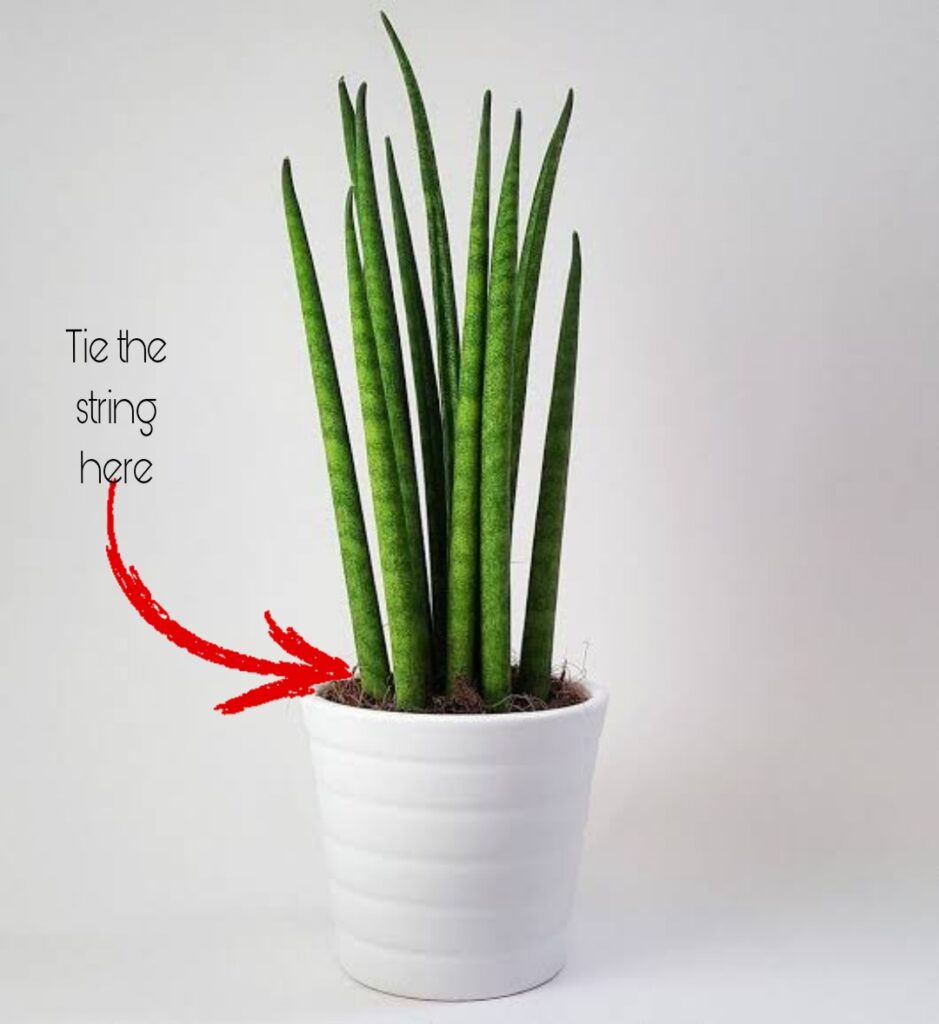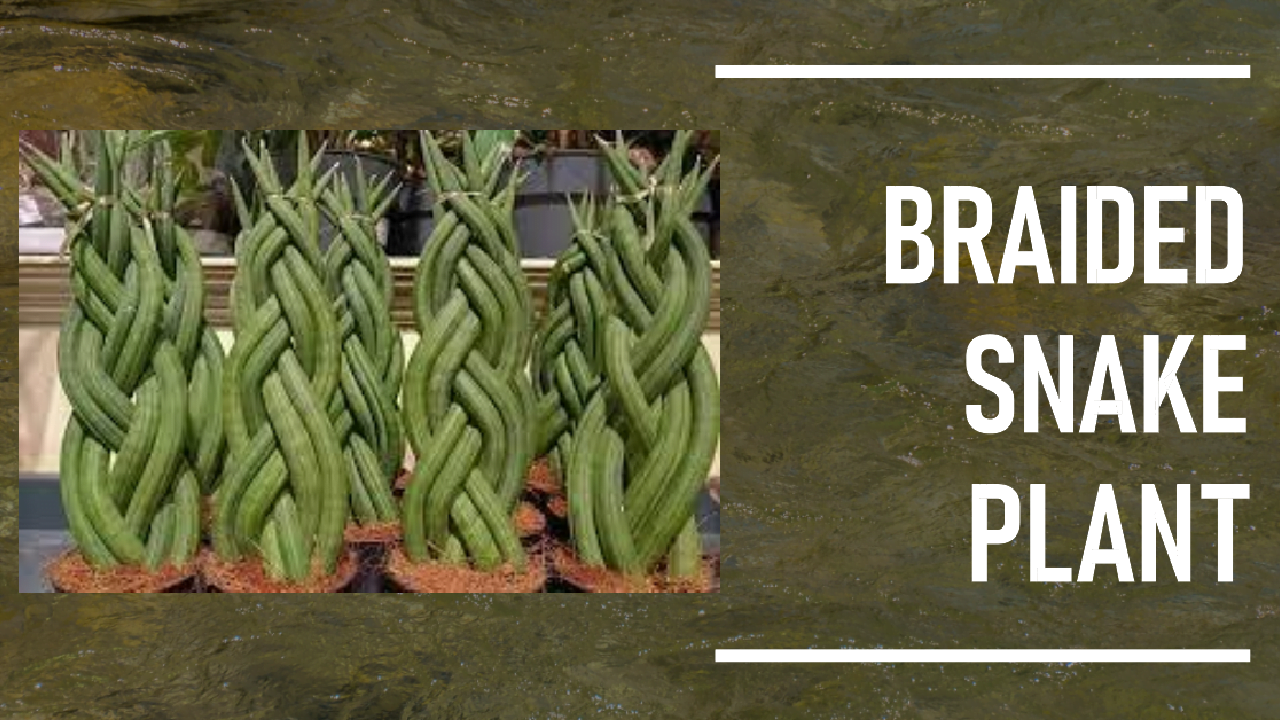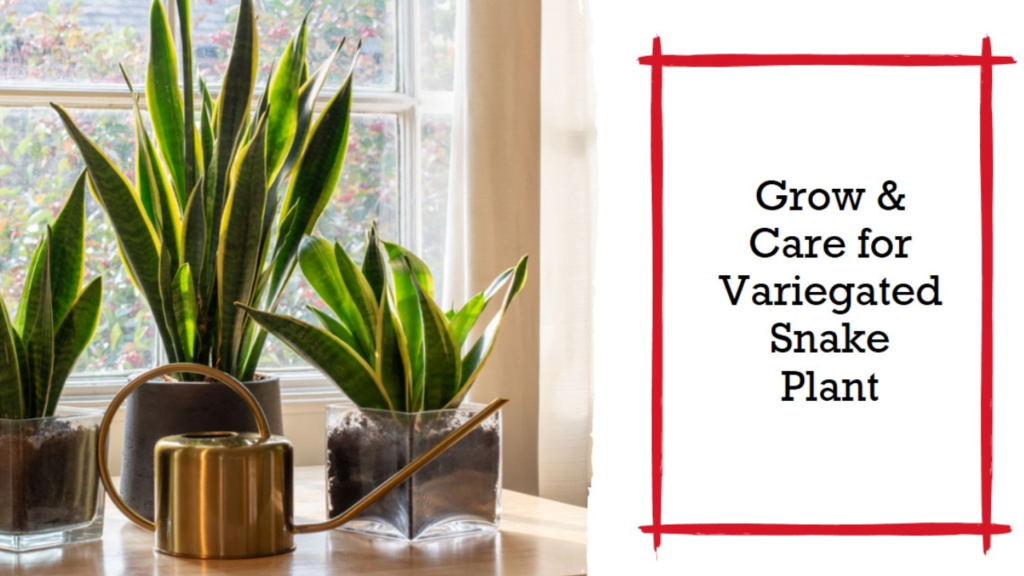Snake plants are beautiful on their own, but when braided they look more remarkable. They make incredible centerpieces and stunning ambiance in any room they are placed. So how we will achieve the classic braided Sansevieria look?
It’s fairly easy and we are here to tell you how with step by step guide along with the tips to maintain their freshness as long as possible;
Table of Contents
What is the snake plant?
Braided sansevieria or braided snake plants are popular among plant lovers for their carefree, low-maintenance personality. They originated in South Asia and Africa’s tropical regions, this is exactly why they are accustomed to harsh weather. Braided Snake plants have unique-looking features; they have thick and round leaves with pointy ends, that almost look like tentacles. Because of its pointy ends, it’s also known as a spear plant.
This braided beauty is known by many names such as; Dracaena Angalensis, spear Sansevieria, and Sansevieria Cylindrica (we are not trying to twist your tongue before the plant’s leaves!).
Their tolerance power makes them perfectly fine indoor plants. Nowadays it’s becoming more popular because its aesthetic look elevates picture quality.
Are there any advantages of braiding a snake plant?
The snake plant itself provides numerous health, mental, and spiritual benefits, but if we are talking about if it can offer something more because of its braided form? then the answer would be no. It’s mainly for the look and look only!
But if we take this into consideration; imagine flaunting your freshly braided snake plant as a centerpiece in your living room, you are getting compliments for its eye-catching looks, and Voilà! You are restored with mental positivity for the rest of the day.
How to braid snake plants?
As you have been waiting for it now let’s talk about the elephant (snake) of the room!
In the following steps, you will discover how to braid a Sansevieria Cylindrica snake plant.
Requirements

- A mature Sansevieria Cylindrica (foliage with more than 12-14 inches)
- One bowl with water.
- Two cleaning clothes
- Scissors
- String
- Rubber band.
Preparation
Doing it outdoors is much more efficient as it can create a mess. Anyway, lay your plant down. Make sure the pointy end of the foliage is pointing towards you and the other side meaning, the roots should be positioned further away from you.
Now, observe your plant to see if it’s collecting any dirt or insects in its leaves. If you braid it along with the insects or dirt it will stuck there for a long time and that will eventually end up getting disease or bacteria building inside the braid.
Take a piece of cloth dip it in the bowl of water, then rinse the excess water and gently cleanse the leaves. After finishing the process take the dry cloth and gently dry the leaves.
Make a ponytail first
Now take a string and gather all the leaves and tie it at the base of its foliage, just like we tie ponytails. To clearly understand the position carefully observe the image below.

Start braiding
After this process outline an image in your mind of how you will achieve it. Make sure you are placing the strings side by side to achieve a clean look.
Now take the string from the right side and bring it between the other two strings. Your right string should be in the middle now and the previous center string should be the new right string now. Bring the left string to the center now. Repeat the process with the new right and left stings till its reaching the pointy end.
Note: As the strings are habituated with their previous form they might act stubbornly to stay firm in the middle. If you can’t handle it by yourself you can ask someone to help you to hold them firmly at your desired place.
Tie it up
You can now tie the end of the braid with a rubber band and for extra secure tie a string over the rubber band as well. You can cut the string at the base by using a scissor or keep it, it’s totally up to you.
And you are done! Simple right? Now place it somewhere where everyone can see your art.
Braided Sansevieria plant care
Maintaining your braided snake plant is as easy as the braid you performed on your plant, cause they are highly low-maintainable. Let’s talk about their needs one by one:
Water
You just have to water it once every two weeks and in winter it’s even less than that. It might sound less to you but it is enough for them to thrive. It might be surprising to you but braided snake plants can live without water for months without showing remorse.
Soil
Being a part of the succulent family it requires well-draining soil. You can use regular garden soil and mix it with sand. A well-draining soil and a well-draining pot would be perfect for your plant. Clogging water in the pot will lead to root rot.
Humidity
Humidity doesn’t play a role in the maintenance of these plants as they are equipped to survive in any humid condition. In case you see brown spots around the tips mist water occasionally.
Temperature
Normal human living temperature is comfortable for them as well. So being said 50-80 degrees Fahrenheit is best for their optimal growth. But they are not accustomed to super cold weather. Temperature below 7 degrees Celsius might harm them. So think twice before getting a plant if you are living in such an area where the temperature constantly stays below 7 degrees Celsius.
Repotting
If your plant stays in low light for the majority of the time the growth process slows down too. In that case, repotting is not necessary, for a few years at least.
Remember, repot only when the roots are overly grown inside the pot, frequent repotting in an odd-sized pot without the need might shock them.
Propagation
Propagation of Sansevieria Cylindrica successfully occurs through the rhizome adjunct or leaf-cutting method.
How to: cut the rhizome near the plant’s bottom and leave it to heal properly. After the healing process plant it in the same soil.
For leaf cutting method make sure the leaves are at least four inches long. The rooting process takes around two to three months. After that, you can plant your new friend in a new pot.
Common issues with the braided snake plant
Sansevieria Cylindrica is known for its adjusting and all-circumstances-friendly persona. Still, certain issues arise. Let’s discuss them and understand why they are derived.
They are toxic
Snake plants contain a harmful compound called saponins and that is even in all over it. Leaves, flowers, roots everywhere. Consumption of those can cause swelling, numbness, burning of the throat and nausea, vomiting if consumed in larger amounts. People with highly sensitive skin are not advised to have this around their house.
Their leaves face various issues
They can suffer from various leaf-related issues such as,
Splitting leaves: Leaf splitting occurred in the form of cracks on the leaves and it is predominantly caused by a lack of nutrients, hydration, and light. Pest infection can also be responsible for it.
Make a plant care routine and provide the attention they deserve.
Wrinkled leaves: snake plants are all leaves (at least above the soil it is), so it’s mostly leaves that show results of mistreatment. Too much sunlight and too less water is the main cause of wrinkled leaves. place them in indirect sunlight and provide the minimum amount of water they crave, and also give them time to recover as well.
Deformed leaves: deformed leaves are especially caused by pest attacks and fungal infections. Pests consume all nutrients from the leaf and leave nothing for the plant to stay healthy. You can only cure it by regular observation, cause early discovery will help you to take the step to get rid of those culprits before they start sucking the juices out of the leaf.
Pest and disease
All your care towards your plant would go to waste if pests get attracted to it and if you keep it unattended, even before you realize it the did would be done. Despite the plants being hardy in nature, some minor intruders still can deplete their essential nutrients. Spider mites and mealybugs are some of those common intruders.
Spider mites: spider mites are responsible for brown spots in the underside of your plant. They live there, suck the sap out of your plant, and lay eggs.
How to get rid of them?
First, locate small webs for assurance. You don’t wanna blame them if those spots are caused by something else. You can rub neem oil on the leaves to get rid of them. Rubbing alcohol will also give the same results. And of course, you need to isolate the plant from its other plant buddies as soon as you locate the bugs.
Mealybugs: Due to the similarity of symptoms mealybugs are often mistaken as the infamous culprit in the planters’ world, powdery mildew. Red spots on the leaves and root rot are common diseases caused by mealybugs.
How to treat them:
You can manually remove them, followed by a pesticide that will nurture your plant back to its health.
Conclusion
To sum it up, if you are growing a variety of succulent species in your house, incorporating a braided snake plant is a must. Their undemanding nature and thriving in every environment, soil, temperature, and water, and to top it off come with a magnificent look that makes this plant one of the most desirable among plant lovers.
FAQs
Q1. How big do braided snake plants get?
The leaves are cylindrical and smooth and can grow up to 7 feet.
Q2. What is the benefit of having a braided snake plant?
Besides flaunting its look having a braided snake plant comes with a number of benefits. The vital one would be working as a natural air purifier. They consume toxins from the air and produce oxygen.
Q3. How fast do braided snake plants grow?
They are slow grower plants. Once braided and secured you can keep it like that for years without braiding or repotting.
Q4. Does snake plant bring food luck?
According to feng shui, snake plants bring health, wealth, and good fortune if you keep them in their ideal place.
Q5. Can I untie a braided snake plant?
Yes! Of course. But do it gently to not harm them. They might look wavy with marks on them because they were habituated to their previous shape. Give it some time it will go away.







